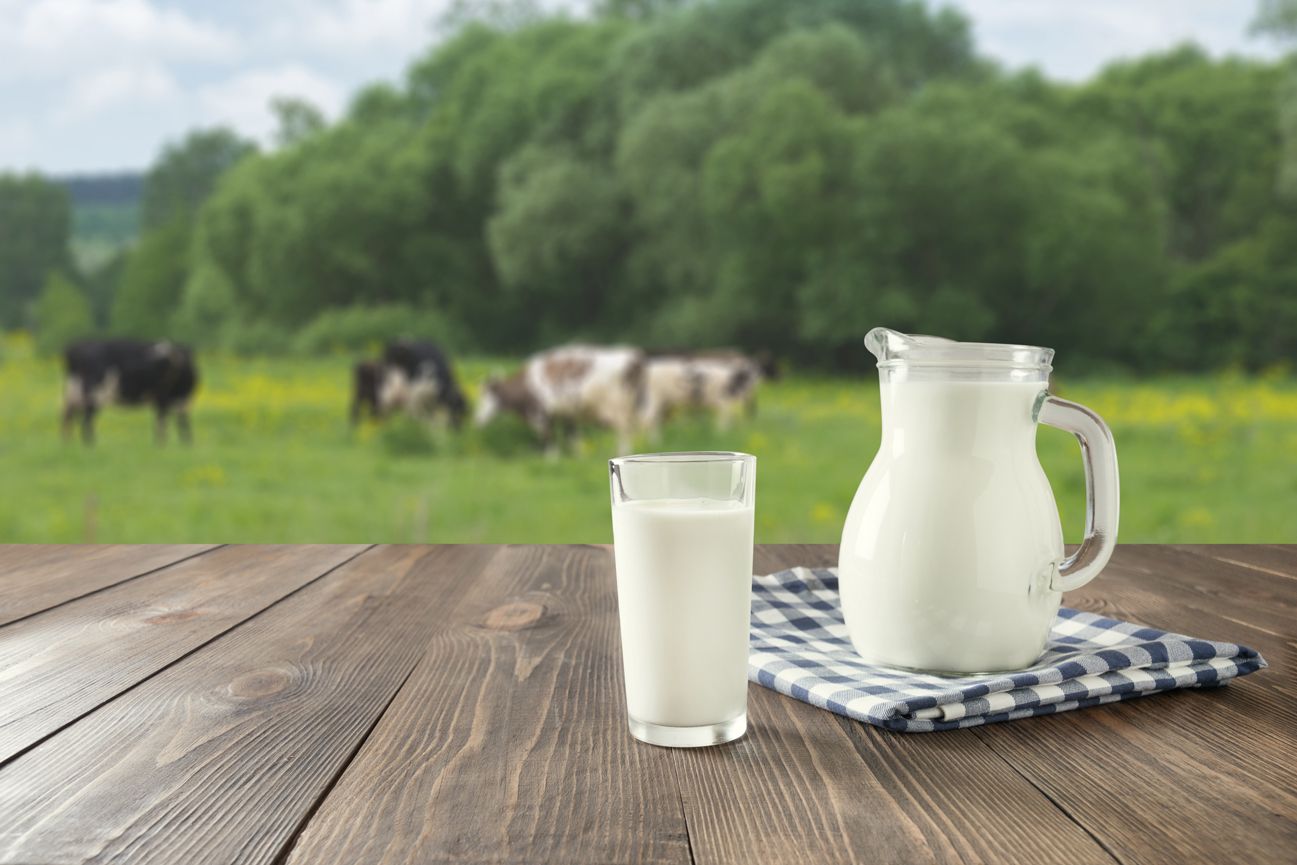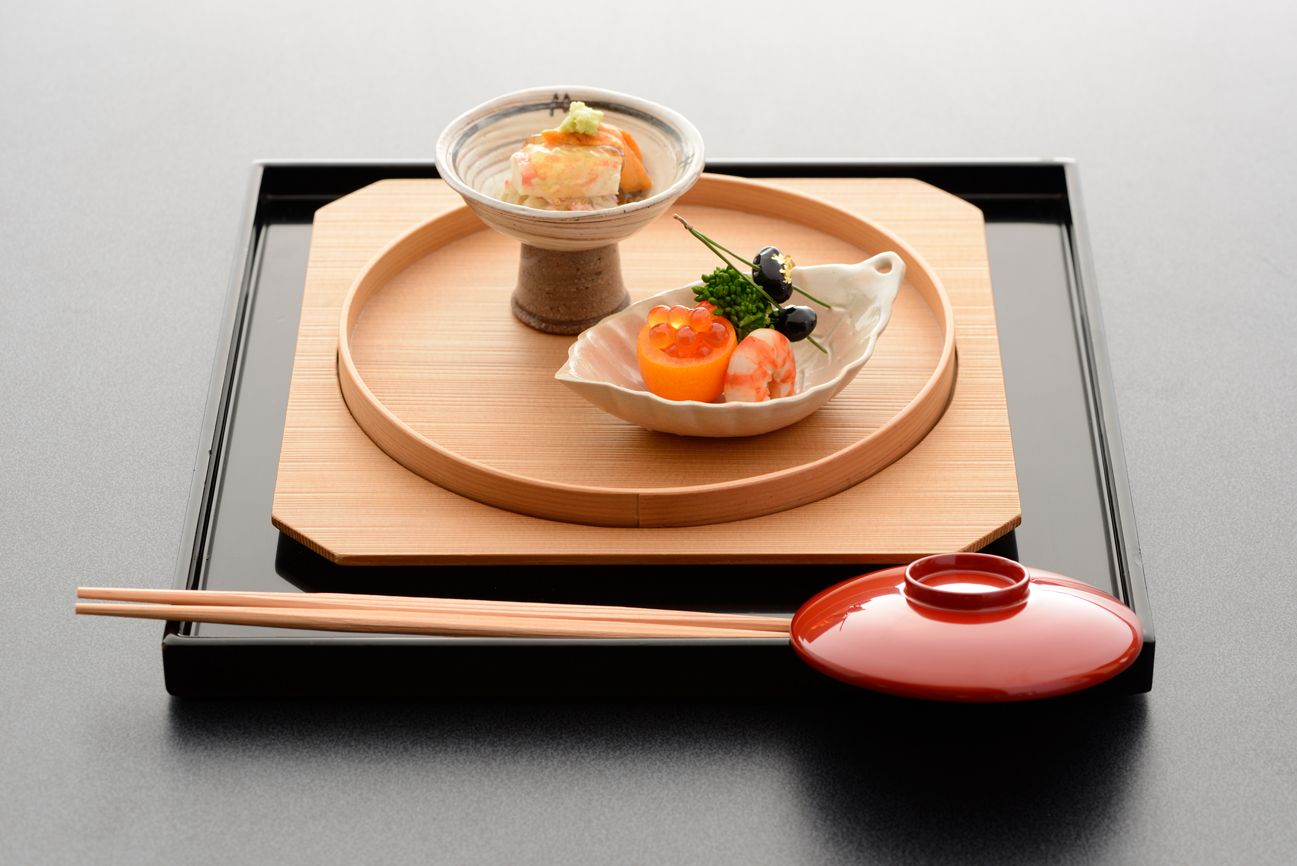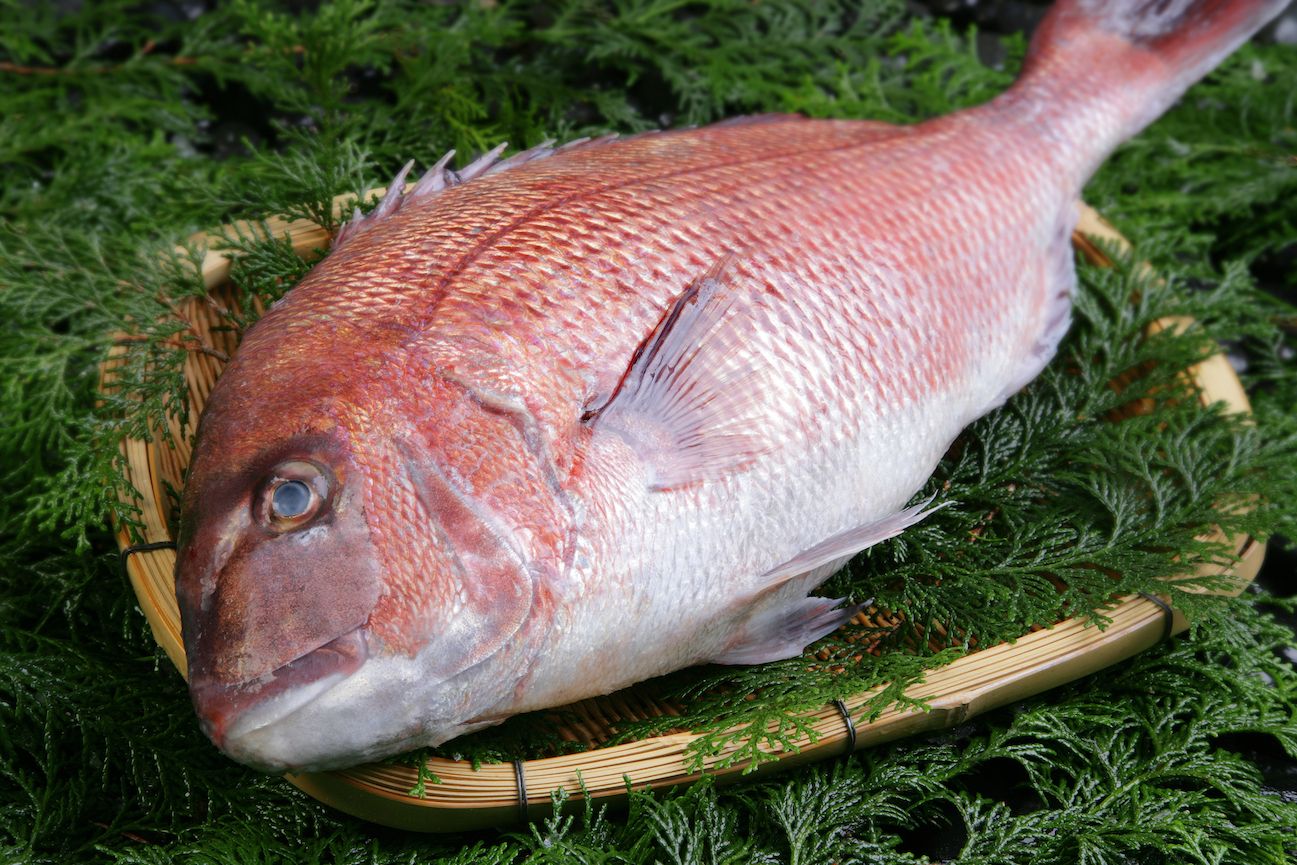
Japan’s delicious fruits of the sea, red sea bream and yellowtail, now adorn dinner tables around the world
Japan, surrounded by sea, is blessed with the choicest fruits of the sea. Among them, red sea bream, representative of delicious white flesh fish with red body color, and yellowtail, which puts on fat and comes into season in winter, are both known as auspicious fish. Thanks to advancements in breeding technology, nowadays their deliciousness can be enjoyed all year long. Also, since production is stable, there has been an increase in exports overseas. Here we look into the charm of the red sea bream and yellowtail of Japan that boast delicate and refined deliciousness.
[Red Sea Bream]
Red sea bream has been loved in Japan since ancient times, with the saying, “Flowers are cherry, fish are sea bream”. Although there are numerous fish that have the name sea bream, the red sea bream has a special presence among them. It is revered as an auspicious fish due to its bright red body and the word association of “madai” (red sea bream) and “medetai” (celebratory). The custom continues of eating it, complete with head and tail, at celebrations and festivals such as weaning ceremonies and weddings. The white flesh with a simple, refined flavor goes easily with any cuisine, and in Washoku, it features in dishes grilled or boiled, in clear soup, in Tempura, or steamed with rice in Tai-meshi, etc. If used raw in sashimi while it is fresh, its plump, spongy texture, unique to red sea bream, and strong tastiness can also be savored. Further, roe of the ovaries can be enjoyed in mixed steamed rice, and the soft roe of the testicles in vinegar or as a topping to a stew. Not just in Washoku, but in Western cuisine, too, its simple, mild flavor can be brought to life, and is a treasured ingredient in all kinds of dishes including Carpaccio, Meunière, Acqua pazza, Bouillabaisse and Paella. It suits various spices and cooking methods of overseas, so it has the potential for use in a wide range of dishes.
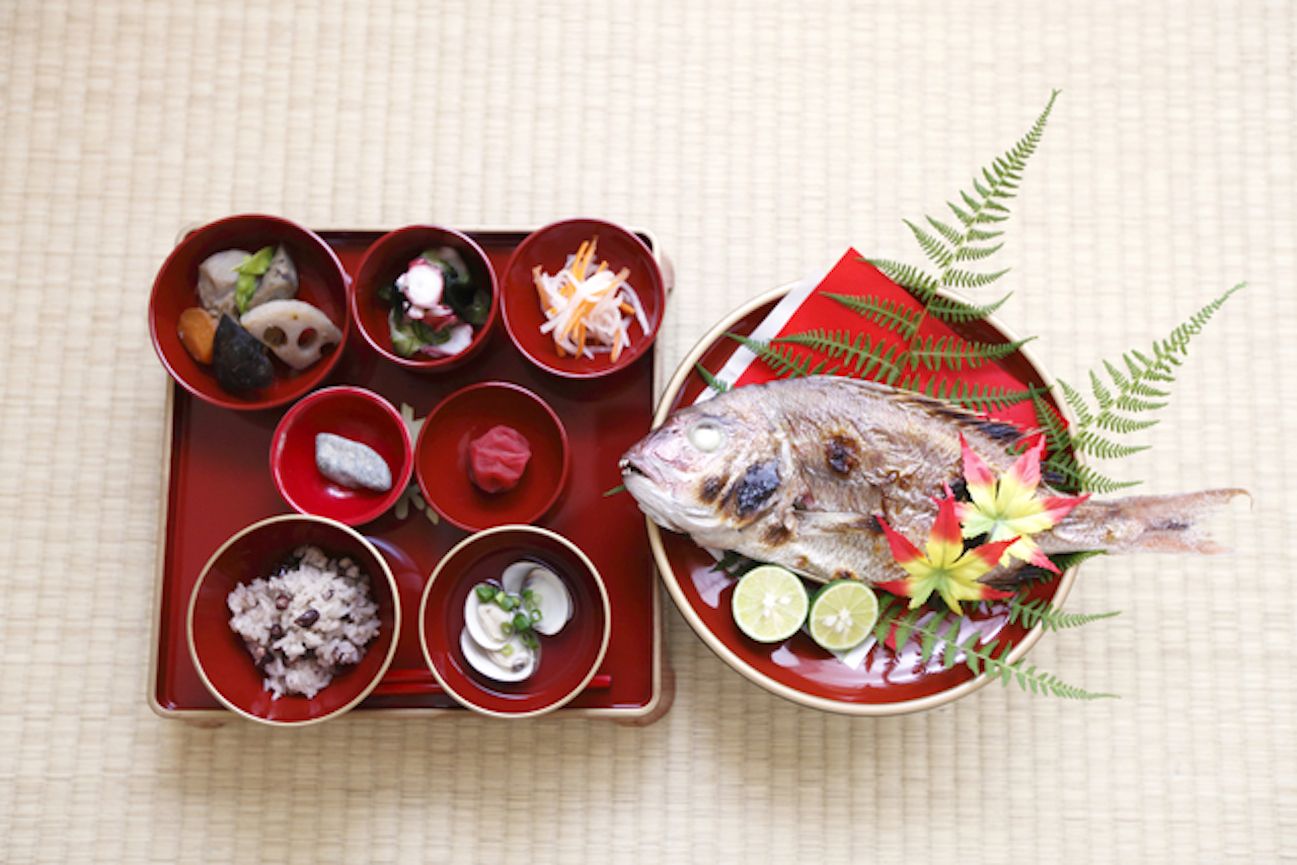
The weaning ceremony is a traditional custom in Japan celebrating the 100 days from the birth of a child, where dishes are prepared in the wish that they will never be short of food. Sea bream complete with head and tail is said to be auspicious.
Wild red sea bream is seasonal, and they put on fat and are said to be at their most delicious in spring, which sees the spawning season, and in autumn, when nutrients are taken in bulk to survive the winter. Those caught in each season have their own names: “cherry bream” of spring and “autumn leaves bream” of autumn, which are held especially precious, and are an ode to the season. Also, red sea bream caught in various places in Japan each have different texture and flavor due to the differences in tidal current of the area of sea where they grew up, and their feed. Particularly famous are wild red sea bream caught in Nagasaki, Ehime, Akashi, Naruto, etc., and since they grow while being tossed by a fast current, they are known for their firm flesh and very delicious taste. For that reason, wild red sea bream, in general, sells for a high price.
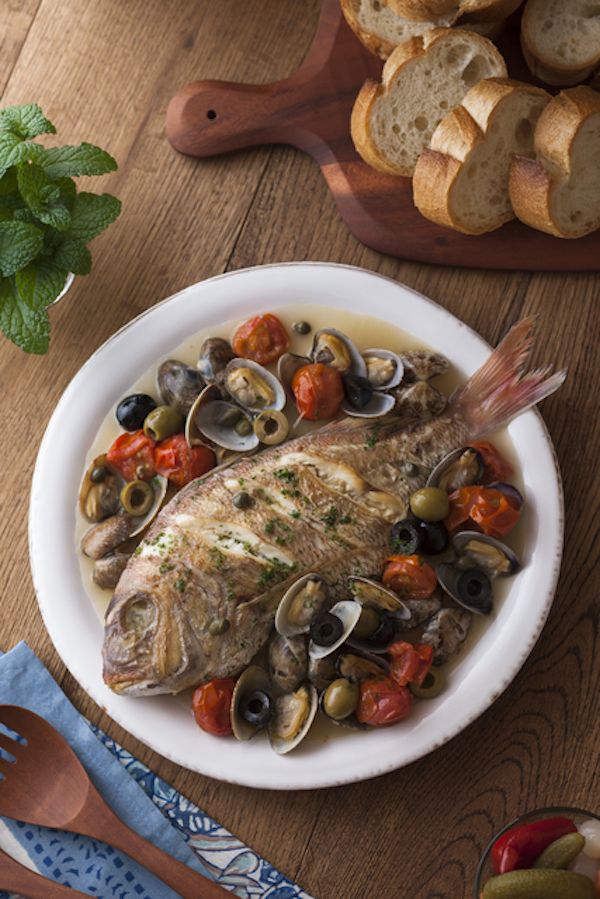
The white flesh has a simple flavor, so it goes well with herbs and toppings in Acqua pazza, Bouillabaisse, etc., and soup made from the fish stock is delicious, too.
Meanwhile, in recent years, breeding technology has advanced in Japan, and is thriving all over the country. At present, the catch of bred red sea bream is as much as five times the amount of the wild. The breeding that involves gathering and rearing wild fry is chiefly carried out in rias coastal areas, where waves are subdued, of warm western Japan. In particular, Uwajima City in Ehime Prefecture, and its surrounding area, produces around 50% of the countrywide share. There are also production areas in Kumamoto, Mie, Kochi, Nagasaki, Wakayama, etc., giving rise to distinctive brand sea bream, each using elaborate feeding and rearing methods. There are many trials and efforts underway; for example, “Citrus iyo red sea bream” (Yawatahama City, Ehime Prefecture) has improved flesh quality providing crunchy texture and refreshing fat by mixing Citrus iyo with their feed. Also, there is, among others, “Fukaura red sea bream” (the town of Ainan, Ehime Prefecture) that removes any raw odor by giving them feed containing herb oil, “Senzaki red sea bream” (Nagato City, Yamaguchi Prefecture) that gives them much exercise to create a taste close to the wild varieties, and “Taiichiro-kun” (Uwajima City, Ehime Prefecture) that has increased amounts of fatty acids, a strong flavor and sticky texture. Whichever it is, bred red sea bream can boast a deliciousness not inferior to the wild varieties, and thanks to it being comparatively easy to come by, it has become a fish set on the table on a daily basis.
[Yellowtail]
Thanks to advancements in breeding technology, yellowtail is similar in that a deliciousness has been realized that compares favorably with the wild varieties. Yellowtail, an endemic species of Japan, is called by a different name as it matures and grows bigger, and for that reason it is known as an auspicious name-changing fish. In order from the time it is fry, it is called Mojako, Wakashi, Inada, Warasa and Buri (in the Kanto Region), with Buri the name given to those reaching a size of over 80cm in length. Yellowtail flesh that has put on fat and gained a rounded flavor is delicious boiled or grilled, in representative dishes such as soy sauce-broiled yellowtail and radish, Teriyaki, sashimi and yellowtail Shabu-shabu. In addition to good-quality proteins, EPA is said to have an effect on improving hardened arteries and blood, and DHA on the working of the brain and nervous system. A further notable feature is it contains plenty of nutritional elements essential to the body and brain, such as B group vitamins and vitamin D. The season when yellowtail is said to be at its most delicious is, in fact, winter, before the spawning season. Yellowtail of this season are especially called “winter yellowtail”, and are treated as a top class fish boasting extra fattening and exceptional deliciousness.

Yellowtail that are over roughly 80cm long are said to be in season when they have put on fat in winter, and are known as “winter yellowtail”.

Soy sauce-broiled yellowtail and radish is a common side dish in Japan. The flavor of fattened yellowtail penetrates the radish, too, creating a rich savoriness.
Yellowtail, originally a migratory fish, was never a stable catch throughout the year, but thanks to advancements in breeding technology, now, good quality yellowtail is available at any time during the year. Breeding takes place on the coastal areas of western Japan, including the large production area of Kagoshima Prefecture, and also Ehime, Nagasaki and Oita Prefectures. Fry (Mojako) attached to floating weed are gathered in spring, and breeding methods used that see the catch of wild yellowtail varieties greatly surpassed, so that most of the yellowtail on sale in shops throughout the year are bred.
Also, yellowtail breeding technology in Japan has characteristics in its feed. Recently, in order to avoid the red flesh turning brown by oxidation, attention has focused on citrus fruits as feed, which contain ample vitamins. Breeding has spread in various locations of rearing “fruit fish”, using different citrus fruits as feed. They are appearing more and more, as unique features of a faint citrus fragrance in the flesh, and of less raw fish odor, prove popular. Representative fish include “Yuzu yellowtail king” (town of Nagashima, Kagoshima Prefecture) with its slight aroma of citrus, “Kabosu yellowtail” (Oita Prefecture) with improved antioxidative effect and elements of savoriness, and “Satsuma yellowtail” (Ehime Prefecture) with added shelf life, flavor and aroma by using Citrus iyo peel, etc. In addition, unique brand fish is also being talked about, like “Choco yellowtail” (Ehime Prefecture) in which chocolate, due to attention on its polyphenol component with high antioxidative effect, is mixed with the feed, and is said to help maintain more freshness. Another, among others, is “Olive yellowtail” (Kagawa Prefecture) that, by adding olive leaves to the feed, suppresses lipids and improves components of sweetness. In this way, it is because of unique breeding technology making full use of Japan’s regionality that so many different yellowtail, brimming with individuality, can be enjoyed.
Since its production is stable, bred fish, attracting attention also from the perspective of sustainability, has seen developments in transportation technology, and that deliciousness can be shared all around the world. Among them, red sea bream and yellowtail are popular overseas as well, for their fattiness, texture and sweetness, and since their flavor can be enjoyed cooked, hold the potential for use in wide-ranging dishes. The fish of Japan are nurtured carefully with time and effort, and various research is carried out on a daily basis. It is hoped that their deliciousness will be enjoyed overseas, too.
[Breeding]
This is an industry artificially cultivating seafood, seaweed, etc. Areas of breeding fisheries in Japan are chiefly in the south, and in addition to red sea bream and yellowtail, large quantities are reared of great amberjack, striped jack, young yellowtail, tiger puffer, gold-striped amberjack, etc. Since a suitable amount of feed is given, prepared using calculations of calories and nutrients based on nutritional science, they can have a better nutritional balance than wild fish, as well as boast a deliciousness that is not inferior. Also, so that feed does not remain and pollute the sea, there is development of feed with minimal environmental impact, etc., and research, for example, into working sustainably and in ways kind to the environment.
References: Japan Aquatic Products Export Council website, Japan Mariculture Association website, Ministry of Agriculture, Forestry and Fisheries PR magazine "aff" (January 2019 issue)
Photographs supplied by: amanaimages, Ministry of Agriculture, Forestry and Fisheries PR magazine “aff”
Text: Eri Arimoto




